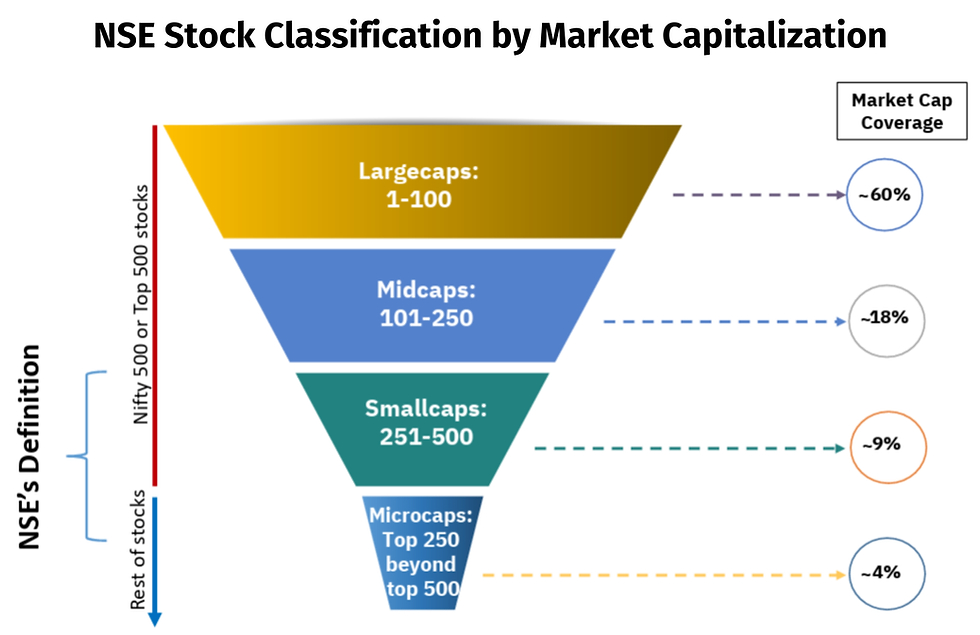Protecting Our Fair Share
- Akshay Nayak
- Oct 1, 2023
- 3 min read
No investment portfolio can be immune to a variety of forces that eat into its returns. Some of these forces come with the territory of creating and managing a portfolio. Hence they cannot be avoided and can only be managed. But others arise purely due to our choices and investment actions. They can hence be avoided completely. Needless to say, we must ensure that we don’t allow these forces to eat into our fair share of returns. Therefore, today I’m going to throw light these forces, and suggest ways to work around them.
The first major force I would like to shed light on is inflation. Inflation is an economic reality in India and everywhere else in the world. Therefore, it is one of the forces that portfolios of investors the world over would have to live with and manage. Any investment portfolio must be oriented to generate a rate of return that is higher than the prevailing rate of inflation in the country. From an Indian perspective, Inflation in personal costs and expenses can range between 8-10%. Therefore, that is the inflation benchmark which our portfolios must be oriented to beat. Failing this, the returns generated by our portfolios would have no real worth. This is because the effects of inflation would reduce the purchasing power of our money.
This also means we would not be able to able to maintain our current standard of living in the future. All of this clearly highlights how important it is for our portfolios to generate inflation beating returns over the long term. And the best way to do this would be to construct our portfolios with a multi asset class approach and a moderate risk strategy, with a minimum portfolio allocation of 50% to risky asset classes such as equity for our long term goals.
Taxes associated with our investment products also eat into our returns significantly. Unlike inflation which is unavoidable, tax payments are a lot more controllable. Some tax implications come with the territory of investing in a given product. But the taxes that arise in case of increased portfolio churn and transaction frequency can be completely avoided. Therefore we must be cognisant of these implications avoid excessive activity in our portfolios. We must also ensure that our portfolios consist of investment products that come with tax benefits. A few popular tax saving investment options include Public Provident Fund or PPF, Employee Provident Fund (EPF) and Sukanya Samriddhi Yojana (SSY).
Finally I am going to throw light on two forces which are completely avoidable. They stem from a half baked understanding of investment products and the financial markets at large. Firstly, we hold products that promise attractive returns, but ignore the costs involved with them. The prime example of this is holding actively managed mutual funds rather than low cost index funds. Actively managed funds fail to deliver the superior returns they promise owing to increased churn within the portfolio. This translates into higher transaction costs and taxes for the fund. These costs are ultimately borne by investors in the form of increased expense ratios or fund management fees. Therefore investors would be better off holding low cost products like index funds.

Also, investors sometimes wait for the perfect time to begin investing rather than initiating the process straightaway. By doing this investors risk doing nothing for long periods of time. They therefore miss out on the potential returns they would have otherwise earned in the interim. Moreover, the best way to derive optimal returns from a particular asset class is to ensure that we are invested every time there is a surge in that asset class. And the only way to ensure this would be to stick to a monthly investment plan designed as per an asset allocation strategy. This would eliminate the need for market timing and allow our portfolios to generate optimal long term returns.
So while some of the forces discussed above may apparently look like realities we have to live with, their impact can be completely avoided or at least mitigated. Therefore, we must do everything we can to manage them. Not being cognisant of these forces would mean that we put in 100% of the capital for our portfolios, bear 100% of the risks involved, but end up with less than 100% of the investment returns that are rightfully ours. And this would represent a raw deal for any investor. Moreover, managing the impact of these forces on our portfolios effectively often ends up being the difference between us achieving or missing out on our financial goals. We therefore owe it to ourselves as investors to not allow them to deplete our fair share of returns.



Comments